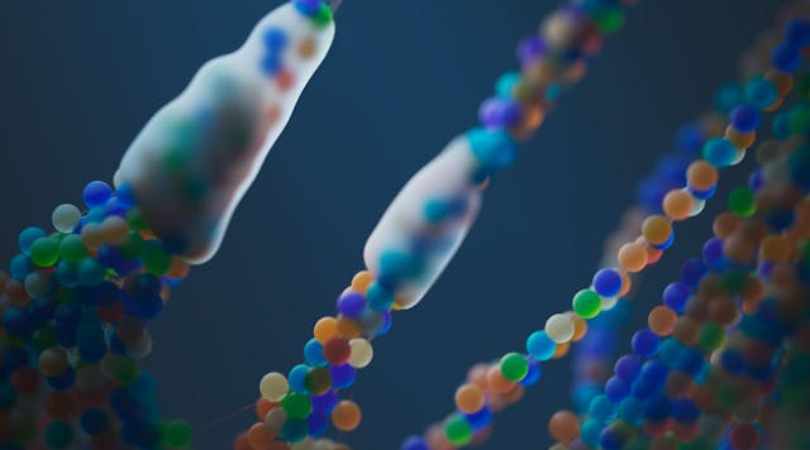Scientists have successfully restored the lost uricase enzyme, a key breakthrough in combating fructose-induced fat formation. This discovery offers new hope for preventing obesity and metabolic disorders by targeting how the body processes sugar and stores fat.
Limited Quantities Available! Order Today and Enjoy Free Shipping on Orders Over $100!
The Role of Mitochondria in Energy Production & How to Supercharge Them

Mitochondria are often referred to as the powerhouses of our cells, but a better analogy is that they are tiny engines inside each cell. These engines burn fuel—primarily glucose and fat—to create energy in the form of ATP, which powers everything from muscle movement to brain function. When mitochondrial function declines, it’s like running on a weak engine—your body slows down, energy is scarce, and metabolism suffers.
The Functions of Mitochondrion

The primary function of mitochondria is energy production, but they also play key roles in metabolism and cellular health. Their main functions include:
- Regulating metabolism by processing nutrients to create ATP, much like an engine converting fuel into motion.
- Managing oxidative stress through antioxidant production—think of them as the cell’s built-in maintenance system.
- Facilitating cell signaling for growth, repair, and immune function, similar to an engine’s onboard computer adjusting performance as needed.
Even in plant cells, the function of mitochondria is essential for ATP production, despite chloroplasts handling photosynthesis. Without properly functioning mitochondria, both plants and animals would be like cars stuck in neutral—unable to move forward efficiently.
Signs of Poor Mitochondrial Function
If your mitochondria aren't working well, it’s like trying to drive with an engine that’s clogged and sputtering. Symptoms include:
- Chronic fatigue and sluggishness
- Brain fog and difficulty concentrating
- Reduced exercise tolerance (getting winded easily)
- Increased susceptibility to metabolic diseases
How to Repair Mitochondria Naturally
Many health experts recommend natural ways to repair mitochondria and boost ATP production, including:
- Eating nutrient-dense foods rich in antioxidants (e.g., berries, dark leafy greens, fatty fish) to support mitochondrial repair.
- Intermittent fasting to promote mitophagy—the natural recycling of old, inefficient mitochondria.
- Exercise (especially HIIT and resistance training) to stimulate mitochondrial biogenesis.
- Cold exposure to increase mitochondrial efficiency, much like tuning an engine for better performance.
- Avoiding processed foods and excess sugar, which burden the mitochondria like filling an engine with low-quality, sludgy fuel.
These strategies help, but they often act as damage control rather than addressing the core issue behind mitochondrial dysfunction.
Check Out - Energy Crashes & Brain Fog? How Blood Sugar Imbalances Drain Your Stamina
The Hidden Saboteur: Fructose-Generated Uric Acid
While most discussions on mitochondrial health focus on diet, exercise, and oxidative stress, a critical factor is frequently overlooked—fructose metabolism and its impact on mitochondria.
When we consume fructose (from sugar, high-fructose corn syrup, or even excessive fruit intake), the liver rapidly processes it. This generates uric acid, a byproduct that disrupts ATP production and mitochondrial function in several ways:
- Inhibits mitochondrial efficiency, reducing ATP production—like clogging an engine’s fuel injectors.
- Triggers oxidative stress, which damages mitochondrial membranes, much like rust corroding an engine’s parts.
- Disrupts cellular energy balance, leading to increased fat storage and insulin resistance, similar to a car carrying too much unnecessary weight, making it less efficient.
The Vicious Cycle of Low Cellular Energy
When mitochondria become inefficient due to uric acid buildup, it’s like running an engine that’s struggling to generate power. The body senses low energy and responds by increasing hunger and cravings, but simply adding more fuel (eating more) doesn’t solve the problem—it just adds more weight to the vehicle.
- Reduced ATP production leads to fatigue and metabolic inefficiency.
- Compensatory sugar cravings drive more fructose consumption.
- More fructose leads to increased uric acid, worsening mitochondrial damage.
- The cycle repeats, promoting chronic fatigue, weight gain, and metabolic disease.
It’s like pouring bad fuel into an already weak engine—it doesn’t run better, and over time, the damage accumulates.
The Key to Supercharging Mitochondria: Target Fructose Metabolism

If optimizing mitochondria and energy is the goal, the most effective intervention isn’t just adding more antioxidants or exercising more—it’s cleaning out the engine by stopping the damage caused by fructose metabolism. Here’s how:
- Reduce Fructose Intake: Avoid high-fructose foods, limit sugar, and be mindful of excessive fruit consumption.
- Support Fructose Metabolism with Luteolin and Tart Cherry Extract: Luteolin inhibits fructokinase, reducing the damaging effects of fructose on mitochondria. Tart cherry extract helps manage uric acid levels, further protecting mitochondrial function.
- Optimize Cellular Energy Production: Once fructose metabolism is under control, traditional strategies like fasting, exercise, and mitochondrial-supportive nutrients (CoQ10, PQQ, B vitamins) work far more effectively.
Conclusion
For years, we’ve been trying to patch up mitochondrial dysfunction with antioxidants, exercise, and diet. But these methods only go so far if we don’t address the root cause: fructose-driven mitochondrial damage.
By blocking fructokinase and reducing uric acid buildup, we restore mitochondrial efficiency, much like cleaning out an engine so it can run at full power. When our cellular engines run smoothly, we better utilize fuel (fat/glucose), and the demand for excess fuel disappears.
At LIV3 Health, this is exactly what we focus on. We believe that fructose metabolism is the root cause of nearly all metabolic dysfunction. Poor mitochondrial function leads to insulin resistance, which sets the stage for every major metabolic issue. That’s why Sugarshield was designed to disable the metabolism of fructose—stopping the damage at its source and allowing your body to reclaim its natural energy balance. If we can control fructose metabolism, we can restore energy, improve metabolic health, and break free from the cycle of insulin resistance for good.
Also Read - Natural Energy Hacks: 10 Proven Ways to Boost Stamina and Fight Fatigue Without Stimulants
References
- Johnson, R. J., Stenvinkel, P., Andrews, P., Sánchez-Lozada, L. G., Nakagawa, T., Gaucher, E. A., & Tolan, D. R. (2020). Fructose metabolism as a common evolutionary pathway of survival associated with climate change, food shortage, and droughts. Journal of Internal Medicine, 287(3), 252-262. https://doi.org/10.1111/joim.12993
- Lustig, R. H., Schmidt, L. A., & Brindis, C. D. (2012). The toxic truth about sugar. Nature, 482(7383), 27-29. https://doi.org/10.1038/482027a
Disclaimer: The information in this blog reflects personal opinions, experiences, and emerging research. It is not intended as medical or professional advice and should not replace consultation with qualified professionals. The accuracy of this content is not guaranteed. Always seek guidance from a licensed expert before making any health-related decisions.


Chris | 🔬 Founder of LIV3 Health
⚡ A keen researcher dedicated to uncovering the root causes of metabolic dysfunction, the key driver of chronic conditions behind 70% of global deaths. His findings led to science-backed, natural solutions designed to inhibit fructose metabolism.
📢 Follow me on Reddit for insights on metabolic health and the future of wellness! -






